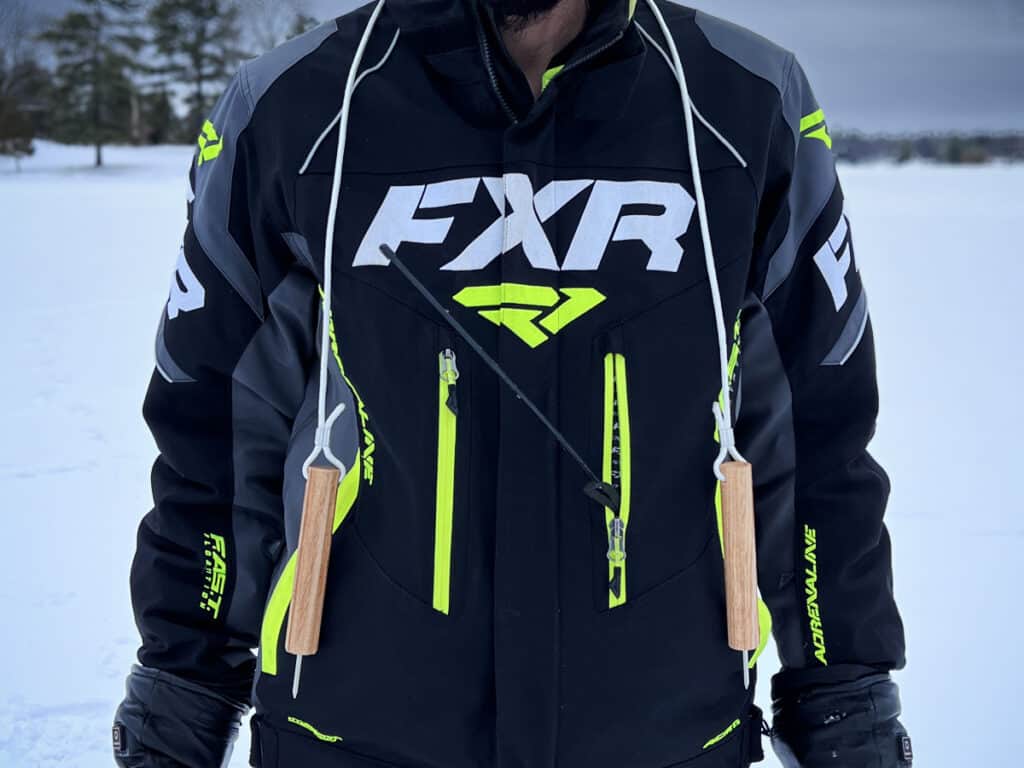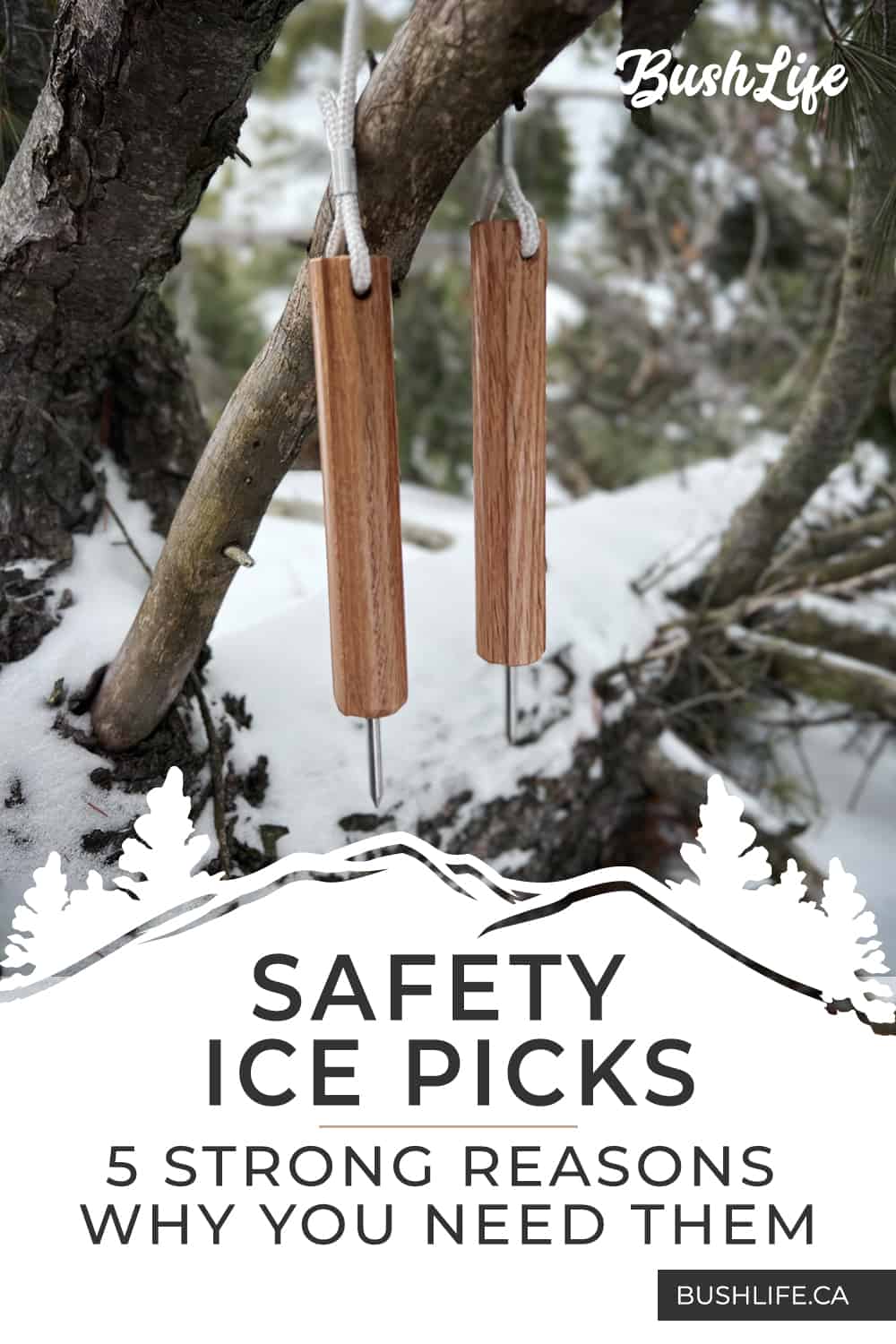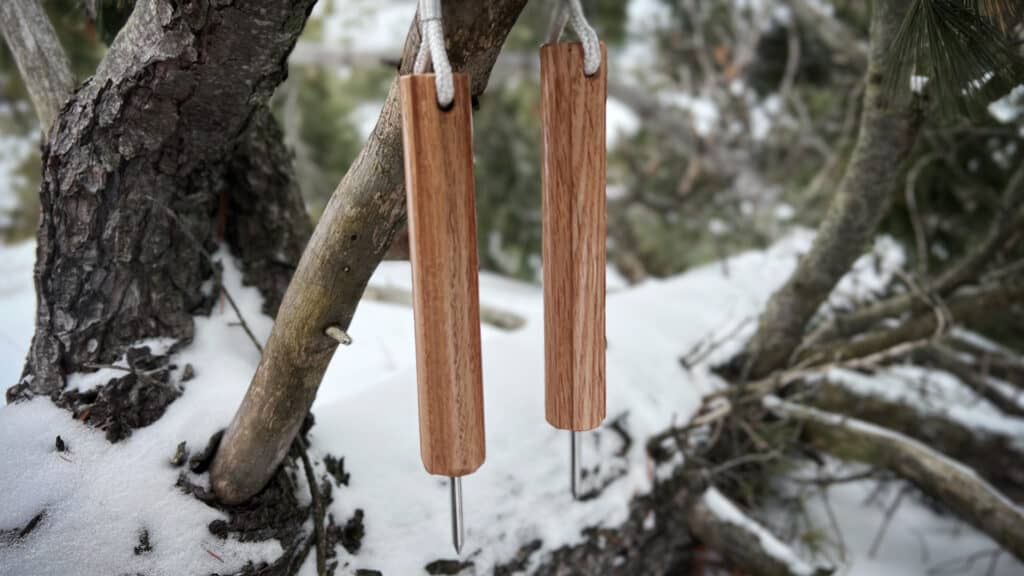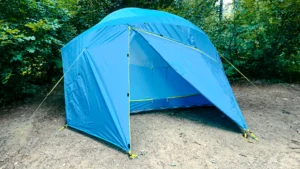Winter sports and activities bring out the thrill and excitement of skating, snowmobiling, and ice fishing. But the risk of plunging into ice can be severe and often overlooked. After all, it is exciting to explore the frozen world around us. But without proper protection from the elements, many icy adventures could end in disaster. Safety ice picks can provide the necessary protection, giving you the confidence and freedom to explore more.
Discloure: Posts may contain affiliate links. Purchases made through our links result in a small commission to us at no charge to you. We only recommend products that meet our brand standards based on testing and first hand use by our authors.
- 1. Basic Ice Safety for Winter Activities
- 2. Ice Thickness and Colour
- 3. Effecting Self-Rescue with Ice Picks from Open Water
- 4. Reducing the Risk of Hypothermia
- 5. Ice Safety Picks Make Ice Activities Easier, Safer and More Fun!
- Purchase Ice Picks for Safety
- A Final Thought as to Why You Need Safety Ice Picks
1. Basic Ice Safety for Winter Activities

Before taking on any ice activities, be sure to check the ice depth in several areas, as well as the condition of the ice. Avoid travelling on the ice at night or when snowing; reduced visibility increases the risk of travelling on weak or open ice. Whenever you venture onto the ice, take a companion with you and let someone know where you are going and when you expect to be back.
Rivers and narrows between lakes (moving water below) often have thinner ice, so be extra cautious there. With a thermal protection buoyant suit or lifejacket, you increase your chances of survival should you go through the ice. You should also carry safety ice picks, a rope and a small personal safety kit. Do not forget that alcohol impairs judgment and coordination and increases the risk of hypothermia, so drink responsibly. If you must drive on the ice, make sure you have an escape plan – unlock doors and open windows, and do not wear a lifejacket while in your vehicle. Lastly, always supervise children playing on or near ice.
RELATED: Heated Gloves: A Massively Easy Way to Beat Frozen Fingers
2. Ice Thickness and Colour

No ice is guaranteed safe! Knowing that ice does not thicken uniformly – always use a tape measure and measure thickness at multiple points.
- Stay off ice that is 0 to 3″ thick!
- 4″ – 1 Person with Gear (walking, ice skating, ice fishing)
- 6 to 8″ – 1 Snowmobile or ATV
- 9″+ – Multiple Snowmobiles, ATV’s
Ice colour is just as important as thickness. Ice colour is the key indicator of its strength and breadth, making it vital to know their meanings:
- Light gray to dark black usually indicates melting ice and should be avoided, as its weak density can not hold a load.
- White to opaque ice is likely water-saturated snow which indicates weakness.
- The safest ice to be on is blue to clear, although it is only safe if more than four inches thick.
- Mottled and slushy ice, regardless of colour, is thawing and should be avoided, as it can be deceptive and appear thick but be rotting away at the center and base.
Be mindful of these ice colours when exploring – safety first!
RELATED: F.A.S.T. Snowmobile Suits: Powerful Gear You Need to Know About
3. Effecting Self-Rescue with Ice Picks from Open Water
It is crucial to prepare yourself for the situation when entering icy water. Cover your mouth and nose with your hand to reduce the chance of water entering your larynx, which can impair breathing. Instead of allowing the momentum of your fall to take you further down, try to slow yourself down. Spread your arms and legs, and pull them together as you reach waist depth.
Once in the water, it is critical to get your breathing under control, which may take up to a minute. Then, turn to face the direction you came from, as this is where the most durable ice likely is located. Swim back to the edge and deploy your ice picks. Make sure to stab the ice safety picks close to the edge, as it will provide more support for your weight. Use your elbows and ice picks to pull your upper body out of the water, then employ a frog kick to get your legs out. Drag yourself away from the edge to get to an area where the ice is strong enough for you to stand up. Lastly, if you have a throw rope, ensure you throw it back to anyone still on the ice.
4. Reducing the Risk of Hypothermia

To reduce the risk of hypothermia, we must understand what happens to the human body when immersed in cold water. Developed by Dr. Gordon Giesbrecht is the ‘1-10-1 Principle’ of cold water immersion. The phases are as follows:
- 1 Minute to Control Your Breathing: Within the first minute, it is natural for panic to set in, especially when you are not anticipating entering cold water. An immediate gasp followed by hyperventilation (fast, uncontrolled breathing) means your primary concern in this 1-minute window is to gain control of your breathing and to keep your head above water.
- 10 Minutes of Useful Muscle Movement: Following the cold shock stage, you have about 10 minutes of meaningful movement during which you can still swim and attempt to self-rescue. If your self-rescue attempt is unsuccessful, pull yourself up onto the ice as far as possible and stay still to conserve energy. If there are people nearby, call for help or blow your whistle.
- 1 Hour Before Losing Consciousness Due to Hypothermia: Studies show after spending about 1 hour in water that is close to 0°c, you will become unconscious due to hypothermia. If you can keep your airway above water with the sleeves of your jacket or keep your hair from freezing to the ice, you may survive another hour or more before dying from hypothermia. Survival depends on the amount of body fat you have, your insulation, how much of your body you can get out of the water, and the exact water temperature.
Stages of Hypothermia
Nobody wants to end up with hypothermia, but it can happen if your exposure to the cold is too long. To avoid it, get out of the cold water and dry up as fast as possible. Seek warm shelter immediately to warm up, and if remote, get a fire going ASAP. If you start to experience any of the symptoms of hypothermia (dizziness, shivering, confusion, etc.), immediately call 911 for medical help. Here are the signs to watch out for:
Mild Hypothermia: a temperature range of 90 – 95 degrees Fahrenheit
- Shivering
- Confusion and fatigue
- Unable to coordinate movement
Moderate Hypothermia: a temperature range of 82 – 90 degrees Fahrenheit
- Intense shivering
- Confusion, amnesia, loss of consciousness
- Slowed breathing
Severe Hypothermia: a temperature of 82 degrees Fahrenheit and lower
- Slowed heart rate
- Slurred speech
- A decrease in perception and judgment
- A decrease in consciousness
RELATED: How To Make Fire in the Snow
5. Ice Safety Picks Make Ice Activities Easier, Safer and More Fun!

Safety ice picks are essential for any ice activity ranging from skating to snowmobiling. They provide an extra layer of safety and peace of mind, allowing you to enjoy your time on the ice. You should always wear the safety ice picks around your neck for quick and easy access.
When shopping for safety ice picks, look for retractable sheaths around the points to avoid accidentally poking yourself or others. Furthermore, the ice safety picks should be durable with a quality, buoyant lanyard to keep them attached. A good ice pick will ensure you are shoring up the right level of safety and preparedness for your activity.
Purchase Ice Picks for Safety
Due to product shortages, it is difficult to find ice picks, let alone retractable ones. By some miracle, we finally found some non-retractable safety ice picks, pictured above in the post. They are handcrafted locally and are not available online.
Unfortunately, these ice safety picks are non-retractable, but at the end of the day, something is always better than nothing. We crossed this bridge in our Introduction to Snowmobiling post, where we found ice fishing safety picks from Eagle Claw. Eagle Claw is a reputable fishing company, and these ice picks for safety have good reviews. In full disclosure, it is one of the few times we may recommend something we do not own ourselves. You can also check your local sporting goods stores, and hopefully, with a little luck, they might have something in stock.
A Final Thought as to Why You Need Safety Ice Picks
Ice activities can be a great way to experience winter, but keeping safe is paramount. Safety ice picks provide an affordable and effective way to keep yourself and your family safe on icy adventures. With adequate protection, you can take your winter activities to a new level of thrilling exploration.
QUESTION: Do you wear safety ice picks? If so, which ones work best for you?
If you found this article informative, please share it with your family and friends. Thank you!
Bookmark this post on Pinterest for future reference!









